Frank Sinatra and Celebrity -
The Beginning and Ending of Showbiz Immortality
By RAR
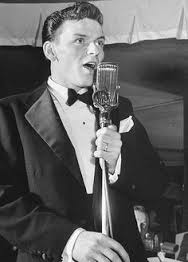 You
know what every American kid, junior high to high school aged, knows about
Bing Crosby? They know that he sang all
those Christmas recordings that kids still grow up with 50-plus years after
their release, and they know that Bing was a strict disciplinarian as a father; maybe a little too strict. When that last bit of public
perception developed was through books published by Crosby's children after Bing
died of a heart attack in 1973. They described him as psychologically abusive,
and two of his children (Lindsay and Dennis) committed suicide in 1989 and 1991
respectively. A commercial You
know what every American kid, junior high to high school aged, knows about
Bing Crosby? They know that he sang all
those Christmas recordings that kids still grow up with 50-plus years after
their release, and they know that Bing was a strict disciplinarian as a father; maybe a little too strict. When that last bit of public
perception developed was through books published by Crosby's children after Bing
died of a heart attack in 1973. They described him as psychologically abusive,
and two of his children (Lindsay and Dennis) committed suicide in 1989 and 1991
respectively. A commercial
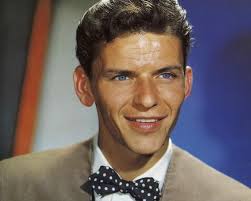 spokesman for the orange juice
industry, an urban
legend spread that Bing used to beat his children with a bag full of oranges. spokesman for the orange juice
industry, an urban
legend spread that Bing used to beat his children with a bag full of oranges.
Part of the reason that people have
found these stories so involving is that Bing Crosby was the first real "star"
of the electronic age. He was there, established in show business as a
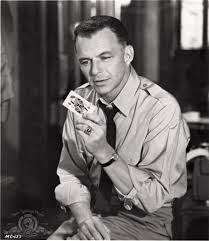 Vaudevillian when the microphone was invented, which changed
everything. Bing and his peers could sing with an intimacy
that was never possible before, because they had never before had the mechanism that would allow them to be heard over their
orchestrations. The Crooner was born with the microphone, although Crosby
referred to himself as "the Groaner". Vaudevillian when the microphone was invented, which changed
everything. Bing and his peers could sing with an intimacy
that was never possible before, because they had never before had the mechanism that would allow them to be heard over their
orchestrations. The Crooner was born with the microphone, although Crosby
referred to himself as "the Groaner".
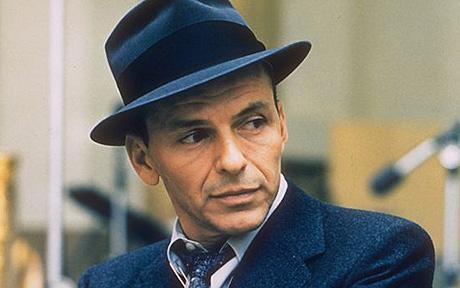 In fact, Crosby's style remained rooted
in the period that spawned him, which from his birth in 1903 to his breakout
stardom in 1934, was punctuated with humbling boom and bust
cycles; war, recovery, and depression. Crosby's approach
was Vaudevillian: what the people want is a show! And you
see that in everything Bing Crosby ever did. He was a nudge-nudge-wink-wink type
of entertainer, standing a little outside of what was happening with a knowing grin, letting his audience in on the joke he In fact, Crosby's style remained rooted
in the period that spawned him, which from his birth in 1903 to his breakout
stardom in 1934, was punctuated with humbling boom and bust
cycles; war, recovery, and depression. Crosby's approach
was Vaudevillian: what the people want is a show! And you
see that in everything Bing Crosby ever did. He was a nudge-nudge-wink-wink type
of entertainer, standing a little outside of what was happening with a knowing grin, letting his audience in on the joke he
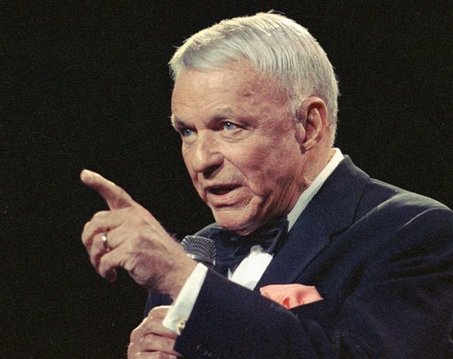 was
portraying in song. It was utterly charming and one-half of the reason the
Hope-Crosby movies worked so well. Bing, seemingly brimming with confidence while at the same time being
void of ego, was reassuring, a comforting presence. The cushy Christmas season was
created around this fatherly persona that he created over time. And that's why
the rumors of his mistreatment of his children carried such weight. We couldn't
have seen that coming from Bing. We really didn't have that sense of intimacy
with him, or any other entertainer of his era. was
portraying in song. It was utterly charming and one-half of the reason the
Hope-Crosby movies worked so well. Bing, seemingly brimming with confidence while at the same time being
void of ego, was reassuring, a comforting presence. The cushy Christmas season was
created around this fatherly persona that he created over time. And that's why
the rumors of his mistreatment of his children carried such weight. We couldn't
have seen that coming from Bing. We really didn't have that sense of intimacy
with him, or any other entertainer of his era.
That all came with a guy who idolized and emulated Bing
Crosby: Frank Sinatra.
Frank Sinatra Has A Cold
In 1966, Gay
Talese published a piece in Esquire Magazine
titled "Frank Sinatra Has A Cold". It was a high
water mark in the history of what was then being called "New Journalism".
Vanity Fair hailed the piece as "the
greatest literary-nonfiction story of the 20th century." It is
"literary-nonfiction" because that oxymoron is precisely what New Journalism
represented: a feature story in which the author uses literary techniques to
present a subjective view of the story's subject. This vulgarization of the
celebrity news profile is considered by academics to be a style that flourished
in the 1960s and '70s, but was dead by the '80s. Anybody, however, who reads the
world's top news-feature publications will tell you that this contention is
wrong; that, in fact, news-feature journalism in the 21st Century is almost
nothing but subjective interpretation of data, and fiction techniques in news
coverage have become so ubiquitous that many consumers of the media have stopped
consuming news altogether. They recognize that it is just for show.
Frank Sinatra, the young entertainer who began singing with
Harry James in 1939, was the first celebrity
in the U.S. to make his young female fans - the "Bobby Soxers" - scream their
appreciation the way young girls would for The Beatles
25 years later. Sinatra had launched to fame in large part because a radio
station in New York started doing a 15-minute live remote nightly broadcast from
the Rustic Cabin, a nightclub in Englewood,
New Jersey. Sinatra worked there as a singing waiter, and trumpeter Harry James
heard those radio shows and brought young Sinatra on board.
From that moment on, the world seemed to know, and be
interested in, an awful lot about Frank Sinatra. What was it about this guy that
had such an effect on young girls? But soon enough, the questions about Sinatra
grew more edgy. Why didn't he go off to fight in World War II, for instance? He
had, of all things, an exemption for a ruptured ear drum. He could hear well
enough to perform with a big band, over screaming audiences, but not well enough
to fight for his country. The gossip columnists paid a lot of attention to
Sinatra, and a profile developed of a swinger who had a wife and kids at home
but who got around with other, sometimes high profile, women. He stole
Ava Gardner from America's Andy Hardy -
Mickey Rooney - and the press had a field day
with this love play. They followed Frank everywhere, and they started to notice
that Frank showed up in a lot of photographs with organized crime figures.
Sinatra began to burn so white-hot, with big selling records and parts in
popular movies, that it seemed only natural that he would eventually run out of
fuel. He did, suffering a vocal hemorrhage on stage at a club in New York. The
press followed all of this with feverish intensity, including the bad movie
reviews and the catastrophic fall from grace as a guy who had been thought to be
a family man, but who divorced his Catholic wife, and whose musical low points
included recording novelty songs for Mitch Miller.
When Sinatra bounced back with his Academy Award winning role in "From Here to
Eternity", the press loved him again, and they followed him to Las Vegas, where
they salivated over his business arrangements with the city's crime bosses.
Sinatra made Las Vegas respectable, exhorting his peers to throw the dice on
playing the big casinos there, and so we entered the era of the Las Vegas Rat
Pack.
Over this period, celebrity press expanded from being
Hollywood tattler material to be in-depth national coverage of people whose
significance was that they were famous. Big industries grew up around these
people. Elvis Presley came along and got the
ride, then The Beatles, until by 1966, when
Talese wrote his Esquire piece on Sinatra, every hipster in the world
could pick up on the absurdity intended its title. Big wheels were turning and
they were growing ever more dependent upon some very common drivers. New
Journalism heralded a new world, in which people would become increasingly more
lost in a thick fog of celebrity.
The Me Generation
Frank Sinatra was an only child, and he conducted himself in
the stereotypical manner of one who is born with a sense of entitlement, and an
exaggerated sense of self. He was first noticed as a member of
The Hoboken Four, performing on
Major Bowe's Amateur Hour radio show, but
Sinatra was never going to be part of a group. He was a lead guy, the one who
everything was all about.
Sinatra dropped the poison pill on every pop singer who would
come after him. He took the song to a place of intimacy where it was impossible
to separate the tune from the singer. He inhabited songs in a way that created
the impression that they were his, meant to convey his
broken-hearted romantic character, which was one he developed and refined to a
masterpiece of performance art. It had to be "art", because Sinatra was
succeeding at doing the near impossible. He was getting audiences to go along
with his voyage into his inner sadness and loneliness, and follow him through
his dramatic successes at overcoming challenge and near death disasters. Sinatra
may have not have invented unabashed ego and self-absorption, but as a performer
he channeled it into a powerful gestalt experience that was visceral, filled
with emotions that people shared even when they didn't actually have those
emotions. There was an alchemy at work, particularly after Sinatra hit his
late-career stride in the 1950s and after his 1966 "retirement". Sinatra had
turned the library of information we all had about his life, and who he was,
into the combustible fuel that fired his act. He offered a plausible depiction
of a deeply hurt, but deeply feeling human being, who should be listened to.
You'll notice I didn't say deeply "caring". You don't often
hear Frank Sinatra's Christmas records in the soundtrack of every holiday
season, when radio stations across the country spend the month of December
playing non-stop Christmas music. Sinatra never sounds very authentic singing
Christmas songs, like a Bing Crosby, a Nat King Cole, or even an Andy Williams
does. He sounds more like the guy who would fail to show up for the family
gathering on Christmas Day because some friends asked him to fly with them down
to Havana.
(Continued in the next column to the right)
|
(Continued from the left
column)
No Longer Possible to be the Hippest Guy
in the Room
Alex Gibney’s “All or Nothing at All” HBO
Documentary Films production makes an interesting
statement about three hours into its four hour runtime. By the
mid-1960s, it was no longer possible for Sinatra to be the
hippest guy in the room.
This
statement speaks worlds about how we in the western world define
“hip” as being aware of, and impacted by, what is happening in
the culture we share with members of the communities in which we
live. This is a state of awareness that, on many levels, is
exclusive to people between the ages of 10 and 50. It may start
earlier and last a little longer than that age range, but
eventually people age into a state of reduced cultural
awareness. We stop finding the new stuff interesting – in fact,
likely see it as just some faddish expression of human
fascination that we have seen before – and we stop changing. We
stay stuck in our time and age in place, which is why my 97-year
old mother-in-law still dresses like Jackie Kennedy, and why I
pleasantly consider some future event to which I might again
wear my Beatle boots.
Middle-aged Frank Sinatra, particularly in retrospect, seems a
little creepy, with his sunshine fedoras and cheap-looking
suits. He never really wore clothes well, too scrawny in his
youth, and too dowdy in his middle years. He developed a
hurt-back kind of walk, a little like old George Burns, and guys
like that are usually looking for their hair-pieces, as
everybody knows. So, it is hard to portray hip through all of
that. The Sinatra of the ‘60s – after he had helped John Kennedy
be elected president, been snubbed by the political elite, and
given himself, for a time, to international charity – was sort
of sad, even while being the huge star that he still was on the
strength of his legend. Sinatra was doing television shows, but
his recording career was dead. He put out an album titled
Watertown, which I had never heard of before watching the Gibney
film, but featured songwriter John Denver, that sold only 30,000
copies. Sinatra’s recording career had died before, then been
resurrected at Capitol Records with Nelson Riddle. He started
his own label with Reprise Records, foreshadowing a time in the
future when big labels couldn’t support the flood of acts
existing in the music business, when self-run recording
operations would finally become the norm.
Sinatra had championed the immigrant class, including
African-Americans, as they were called at the time. In 1945 he
had done the short film “The House I Live In”, in which he
played big brother (not in the Orwellian sense) to a bunch of
kids from the neighborhood, explaining the virtues of acceptance
of people from all races and classes of society. It was a pretty
blatant attempt to get Frank Sinatra, who got a medical
deferment that kept him out of service in World War II, on the
right side of public opinion. That said, it was Sinatra at his
very best. He was a good actor and he knew how to turn on the
charm.
In
fact, it was Sinatra’s uncanny ability to take a cheesy concept,
and turn it into a masterful work of art, that separated him
from virtually every other performer in the world. That almost
no one else has actually been able to do that over the course of
a 50 year career, as did Sinatra, attests to how rare of a bird
he was. And it also explains why lounge singers doing Sinatra
songs are so unbelievably horrible. Sinatra had done the course
in vocal development, so he could sing like a saxophone, and he
had a great ability to recognize songs that he could make his
own, and somehow those assets conspired to overwhelm his
otherwise execrable personal tastes. On face value alone,
Sinatra started looking like Rodney Dangerfield at the country
club way back around the time he started playing Las Vegas in
1951. He built that tacky town, which remains to this day a
place that is a reflection of the baseness that really drove
much of Sinatra’s long exercise in hedonism.
Can You Trust this Guy?
One might ask Sammy Davis, Jr.,
were Sammy still around to ask. Frank Sinatra had been an
important ally of prominent Black figures in American society,
and one-of-the-boys among the Blacks who played in his
orchestra. Sinatra’s band leader was a very young Quincy Jones.
Sinatra had gained street cred with the Black community by
threatening to walk if the Vegas casinos that he played
discriminated against his Black friends regarding housing
arrangements. He did fundraisers for the NAACP and he stumped
for Jack Kennedy, who Black political leaders, like Martin
Luther King, Jr., were placing a great deal of hope in. The
coolest performance clip in the Gibney piece shows Sinatra
playing a prison in Washington D.C., with the Count Basie
orchestra, where a virtually all-Black population demonstrates
their approval. Sinatra never seems more real.
Sinatra had borrowed the name of the Rat Pack from a Hollywood
contingent built around Humphrey Bogart and his friends, and he
created a Vegas version that included the versatile entertainer
Sammy Davis, Jr. Davis was an explosive talent, able to dance,
play drums like Gene Krupa, and sing with range and emotion, and
his inclusion in a stage act that featured Dean Martin, Joey
Bishop, and Peter Lawford, seemed like an important signal to
send in the United States, where the civil rights movement was
gaining steam.
But
then something weird happened. Sinatra and his White friends
started making Sammy the butt of racist jokes, which Sammy
Davis, Jr. went along with for reasons known only to him. His
willingness to accept this very public Uncle Tom role infuriated
those Blacks who had felt so supported by Sinatra’s championing
of their cause. It got even weirder after the 1960 election,
when Jack Kennedy won with the help of Sinatra’s Chicago mob
connections, and then promptly invited Sinatra’s sidekick Sammy
Davis, Jr., out of the picture. They didn’t want him, and his
biracial marriage, to be a part of the inauguration festivities.
The Kennedys – the hope of the civil rights leaders – were
showing a racist side.
In
fact, the Kennedys not only snubbed Sammy Davis, Jr., but soon
enough they dropped Sinatra, as well. Sinatra had reportedly
taken a tongue-lashing from his mob friends, after the newly
elected JFK named his mob-busting brother to be Attorney General
of the United States. The mob figured Kennedy owed them the
favor of backing off on investigations into their activities,
and that Sinatra was their go-between guy who would make that
happen. Sinatra and Jack Kennedy had been play pals on the West
Coast, diving in the same flesh pools of Hollywood, and Sinatra
reportedly loved Jack Kennedy, who turned out to be a guy he
couldn’t trust.
Sinatra not only dumped Sammy Davis, Jr., he essentially dumped
the entire civil rights movement when he switched allegiances to
the Republican Party and started supporting people like Ronald
Reagan and the corrupt Nixon vice president Spiro Agnew.
Sinatra, who had been a life-long Democrat, was widely thought
to be supporting Republicans to get back at the Kennedys, who
had misused him all those years earlier. That would make his
political switch something like a vendetta, and very Italian.
The New Pollution
In
2015, Frank Sinatra feels like a ghost of a long-ago time. The
world that he personified – the “Come Fly with Me” enthusiasm
about an age that would introduce a fabulous new world of
globe-trotting adventure – turned out to be one in which coach
class didn’t even offer room for your legs, let alone microwaved
meals. Audiences in 2015 are much less inclined to ride as happy
passengers on somebody else’s flight of ego. The era of the
Sinatra-style “star” has yielded to the world of the Kanye
West-style celebrity, which is more car-crash voyeurism than
absorption in someone else’s artistic expression.
It
could be argued that, in 2015, there is a societal rejection of
the perceived phoniness of the Sinatra-style personality, though
Sinatra’s Rat Pack mentality does continue to live on among the
Hip Hop community and to inhabit the inner worlds of Justin
Beiber and Marshall Mathers. But none of what these latter-day
star hedonists do really matters, the way Sinatra did in his
time. We are in an era of anti-hero worship, which probably
underlies the current fad with body tattooing, with average
citizens emulating a look that previously belonged only to
ex-convicts, motorcycle gang members, merchant marines, and
carnival freaks. Everything about today’s style is a rejection
of shining phoniness, which shows up now in public opinion
research that indicates that young people today put very little
emphasis on individual artists. They like songs, but could
hardly care less about the people who produce them.
Certainly a part of this change in public perception must be
that people have gotten sick of unextraordinary people living
large in a world of generally diminishing returns. In fact,
people no longer use that cliché – living large –because the
concept now seems so out of reach.
Sinatra, who evolved Bing Crosby-level celebrity to its “Jet
Age” form, left the world that followed with a template that
seemed absurd as we moved toward the “Digital Age”. He lives on
today as a kind of a caricature that we still recognize
immediately, but that precious few can portray in any effective
way. Harry Connick, Jr. does
a fair representation of Sinatra’s style, as does
Michael Bublé,
but that is all on a superficial musical level. Sinatra was
music plus his own unique personality and backstory, and the
contemporary world offers no support for a phenomenon such as
that. Nobody knows, or even wants to know, Michael Bublé’s
back story, because inevitably it would be that of some
aggressive, fame-seeking kid leaping over walls to achieve his
selfish ambition. We’ve seen all that – saw it in Frank Sinatra
– and it is nauseating. Sinatra killed the mega-star artist,
making the label his forevermore by virtue of the fact that the
well dried up for his particular brand of super ego.
|
